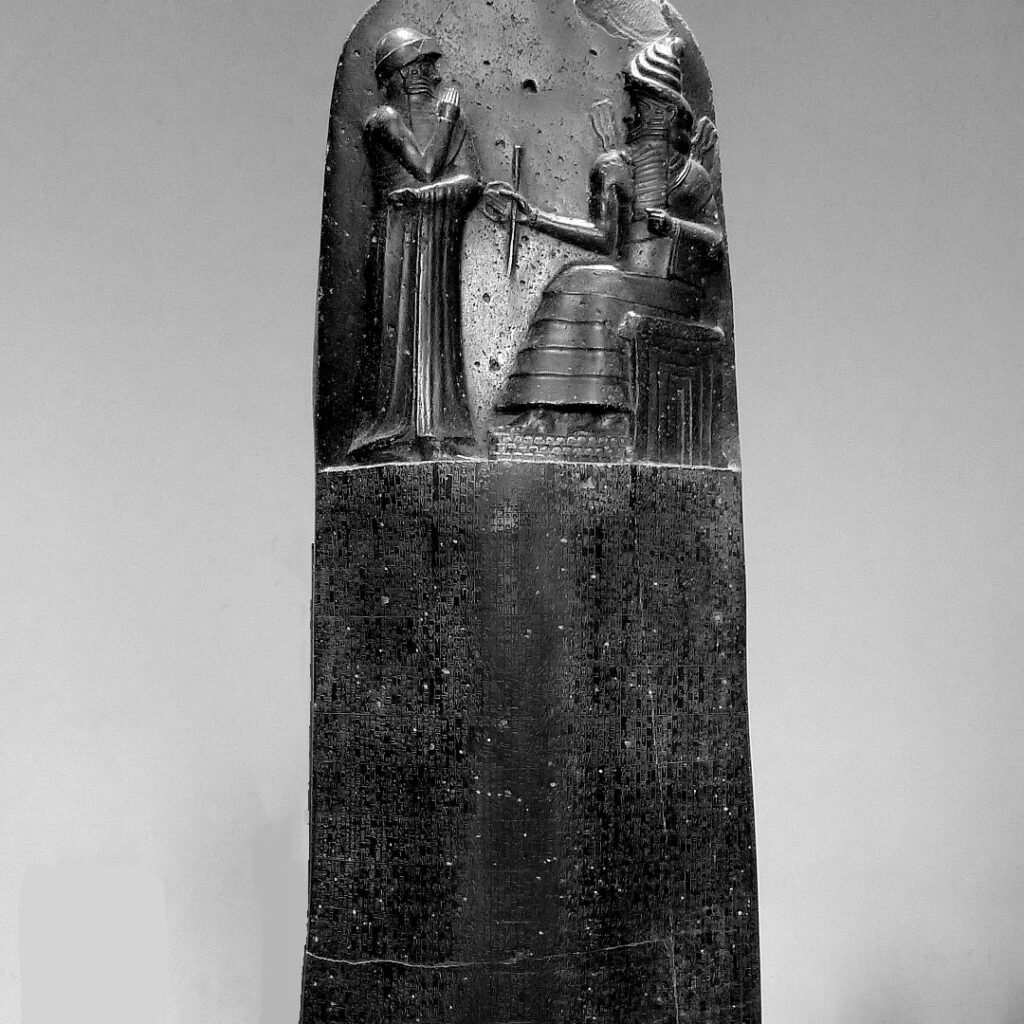When we think of laws, we often imagine modern courts, lawyers, and written codes. But the roots of legal systems go back thousands of years. One of the earliest and most famous is the Code of Hammurabi, a collection of laws carved into stone nearly 4,000 years ago. Remarkably, among its many rules about trade, family, and justice, it also tells us something about one of humanity’s favourite drinks: beer.

Who Was Hammurabi?
Hammurabi (sometimes spelled as Hammurapi) was the sixth king of the First Babylonian Dynasty, ruling from around 1792 to 1750 BCE. He transformed Babylon from a small city-state into a powerful empire that stretched across Mesopotamia. Hammurabi is remembered not just for his military conquests and diplomacy, but also for his role as a lawgiver. He wanted to unify his diverse kingdom under a single set of rules to ensure order and justice.
The Code of Hammurabi is a series of nearly 300 laws inscribed on a large stone stele, now housed in the Louvre Museum in Paris. Written in Akkadian cuneiform, it covers a wide range of topics: property rights, trade, marriage, inheritance, debt, and crime. What makes it stand out is its principle of proportional justice, often summarised as “an eye for an eye.” While not the first legal code in history, it is one of the most complete and influential.
The significance of the Code of Hammurabi
The Code of Hammurabi is significant because it represents one of the earliest attempts to publicly display laws. By carving them into stone, Hammurabi made them visible to all and showed that justice was tied to the king’s authority. The stele also emphasised that laws were divinely inspired – Hammurabi claimed the god Shamash, the sun god of justice, had given him the authority to rule fairly.
Beer in the Code of Hammurabi
Perhaps most fascinating for brewers and beer lovers is that the Code of Hammurabi includes several laws about beer. In Mesopotamian society, beer was more than a casual drink – it was a staple of daily life. Made from barley, it provided nutrition, and played a role in religious rituals. Taverns were social hubs, especially for the working classes.
The Code regulated beer in at least three important ways:
- Beer quality and fair measures
Hammurabi’s laws required tavern keepers – often women – to use standard measures when serving beer. Cheating customers by watering down drinks or charging unfair prices was forbidden. This shows that even 4,000 years ago, governments were concerned with consumer protection. - Taverns and social order
Taverns were seen as both necessary and potentially dangerous. The Code punished tavern keepers who allowed criminal activity or conspired against the state inside their establishments. In this way, the law treated taverns as places that needed supervision, much like modern regulations on bars and pubs. - Beer as currency
Beer was often used as payment for labour. The Code reflects a society where beer was not just a beverage but an economic unit. Workers might receive rations of beer as part of their wages, meaning that quality and fairness mattered at both a personal and societal level.
For brewers today, these laws highlight just how deeply beer was embedded in Mesopotamian culture. It wasn’t only about enjoyment; beer was linked to trust, justice, and the smooth running of daily life.

Conclusion
The Code of Hammurabi stands as one of history’s earliest legal systems, shaping ideas of justice for millennia. Yet beyond its stern rules and famous “eye for an eye” principle, it also gives us a glimpse of everyday life in Babylon. Beer, essential to survival and social life, was protected by law – ensuring fairness in trade, safeguarding quality, and reinforcing its role in the economy.
So next time you enjoy a pint, remember: nearly 4,000 years ago, Hammurabi was already making sure that beer was brewed, measured, and enjoyed under the rule of law.


